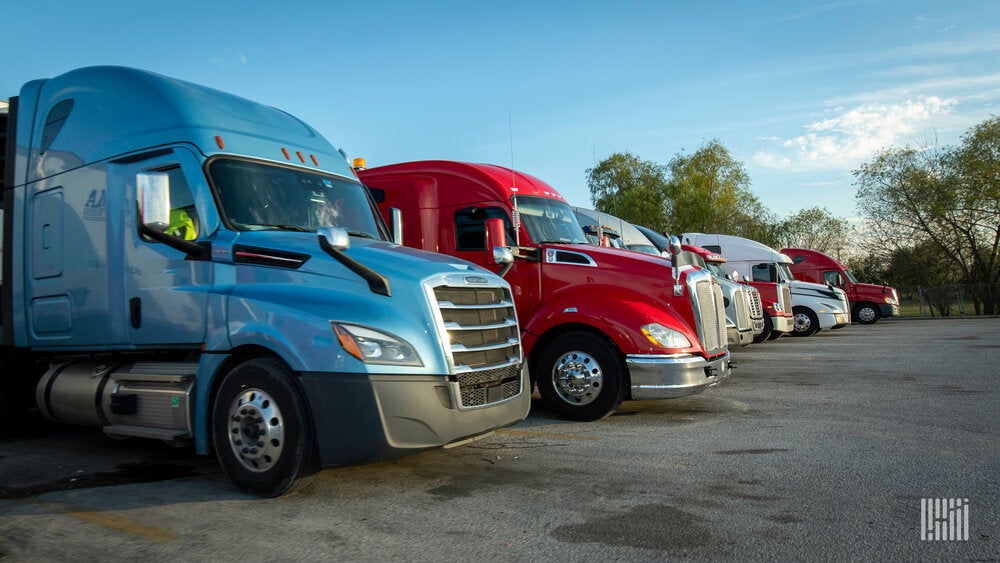I have been around trucking for 42 years – literally my whole life. My grandfather and father founded trucking companies. I began to learn about trucking when I was very young, because I grew up in a trucking family. Family dinners and vacations revolved around trucking. It would be unusual for my family to go through a single dinner without something about trucking coming up.
I learned about economics from my father, but rather than talking about the broader economy, his lessons about the economy were all grounded in the trucking market. When I was in college, I started to learn about the broader economy, economic theory, and financial markets. I also learned the meaning of commodities.
The definition of a commodity, according to Investopedia, is:
A commodity is a basic good used in commerce that is interchangeable with other goods of the same type. Commodities are most often used as inputs in the production of other goods or services. The quality of a given commodity may differ slightly, but it is essentially uniform across producers.
In trucking terms, if the providers of trucking services are “interchangeable,” meaning that comparisons between one trucking firm and another are nearly impossible; therefore it meets the definition of interchangeable. Or to borrow a market term – “fungible.”

No trucking executive wants to admit it – including my father – but trucking is a commodity. There is no way around it. Price is strictly driven by supply and demand fundamentals, nothing else. Those in the trucking industry are beholden to the market and have limited control over one of the most important drivers of profitability – pricing.
Investopedia goes on to describe in a commodity market that there is little differentiation from one producer of a commodity and another producer. The basic idea is that there is little differentiation between a commodity coming from one producer and the same commodity from another producer.
This sounds like trucking.
The reality is that whether it is an orange truck, blue truck, white truck or red truck that bumps a dock, they will all operate nearly identically, as long as the driver is qualified for the mission and the truck is maintained in an acceptable way so that it can get from point A to B.
If trucking is a commodity and the market sets the rate, what can a carrier do to avoid being caught up in massive rate downturns?

Market rates
The first thing is to keep in mind that you can’t control the market rate.
You can tell your friends and brokers that you “won’t haul cheap freight,” but in the end, as long as someone is willing to haul that load cheaper than you will, you are going to sit. If this is your game, take an extended vacation and park your truck. You’ve earned it!
Besides, all of the other trucking companies will appreciate that there is one less truck in the market chasing a dwindling freight market.
Truck utilization is key
The second thing to keep in mind is that utilization is the most important factor in profitability. You can’t control the market, but you can control what lanes you take and where your truck is. Look for markets that have more freight volume relative to trucks. FreightWaves calls them “headhaul markets.”
Headhaul markets are areas where you can be sure that there are load opportunities. In a slowing environment, it will be harder to find headhaul markets, but in FreightWaves SONAR we have a headhaul indicator that shows the relative balance of trucks compared to loads in a market. It is based on actual contracted loads and truck counts in a market. The headhaul markets are colored blue on the haul map below.
We have a saying for carriers – “run blue to blue,” which means keep a truck moving between stronger freight markets and avoid markets where you are going to struggle to find loads.
In the SONAR headhaul map, the best markets for carriers are deep blue. The worst markets for carriers are deep red. Blue ones represent “headhaul markets” or markets where there are more loads than trucks. Red markets mean the opposite.
Currently, Dallas is the best headhaul market in the country.
Keep in mind that the national and individual markets change every day and this map is updated daily. Since the map is built using actual load and truck data, it isn’t skewed like load board data, which can have “ghost loads.”
Find the ‘best’ loads
Last, the best loads are not going to be found on the load boards. The load boards tend to be the subprime part of the market, where freight ends up after it has been picked off by brokers’ private marketplaces.
New digital brokerage apps like JB Hunt 360, Convoy, Loadsmart and Uber Freight tend to have higher quality loads. Carriers are vetted by the marketplace. If you want a more open marketplace, but not a load board, check out Trucker Tools, which is a private marketplace for 3PLs, but because it offers integrated tracking, loads with attached visibility service tends to be preferred over a load board posting that doesn’t offer integration dataflow for premium freight.
Relationships generate revenue
The best way to get a premium over the market rate?
Build a relationship with a shipper or broker. Those routing freight, whether at a broker or shipper, are busy with many tasks. Become their provider of choice. Get to know what they are offering in the market and offer to take the load at those levels, but ask them to provide more than just the one load. Ask for additional load opportunities.
If rates in the market are falling, it is better to lock in a decent rate today, which a month from now may seem like a good rate.
Additionally, you can negotiate with the broker or shipper.
Sure they don’t want to pay more than they have to, but an even bigger headache is dealing with service failures from a carrier that isn’t dependable.
Offer them a service guarantee and in return ask for a bonus if you are early. I used to do this all the time. It gives the broker peace of mind, so they can worry about the carriers that aren’t guaranteeing service.
Ask the broker what they are willing to pay and counter “If I guarantee service, can you add another 5% on top of the rate?”
Move to a less commoditized part of the market
There are parts of the trucking market that are not hyper-competitive. This could include specialized services, military, hazmat, or tanker.
The dry van market is the most brutal part of the truckload market because anyone can participate. If you move into a market with less competitors, you will be much better off.
Want more insights? Get the freshest data in the market. FreightWaves SONAR provides the fastest and deepest perspective on freight market trends. Sign up for a demo at https://sonar.freightwaves.com/.







